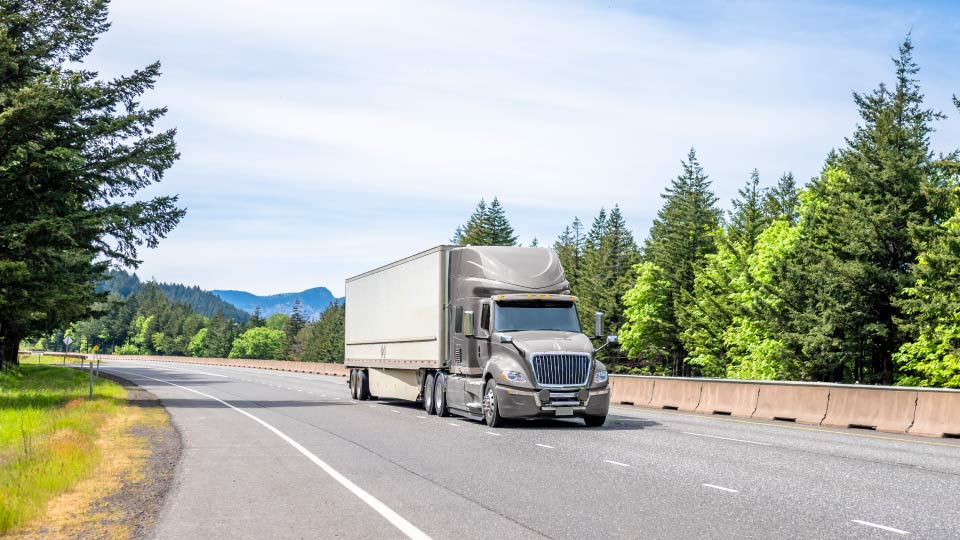Electronic Logbooks: Mandates, Compliance, & Implementation
Electronic logbooks automate Hours of Service records for truck drivers.

For more than 80 years, truck drivers have had to prepare a record of duty status (RODS) that documented their hours of service. In the past, drivers had to fill out physical paper truck logs, which were time-consuming and more prone to errors. With the advent of the electronic logbook for truck drivers, it’s much easier for commercial drivers to keep their RODS up-to-date.
What is an electronic log book?
An electronic logbook (ELD) is now a mandatory requirement for trucking companies and drivers to comply with regulations.
Electronic truck log books automatically capture data on driver status that drivers previously reported manually on their paper RODS. The electronic logging takes place automatically using a connected IoT device that ties into the vehicle.
Electronic logbooks for truckers must capture the following information:
- Date
- Time
- Location
- Engine hours
- Vehicle miles
- Driver identification
- User authentication
- Vehicle
- Carrier name
Additionally, ELDs allow drivers to transfer the stored information directly to enforcement officers during roadside inspections.
What is the electronic logbook law?
The ELD Mandate, which became effective on December 18, 2017, requires the use of electronic logbooks for recording driver hours of service. The purpose of the ELD rule is to enhance driver safety and productivity.
Are truck driver electronic logs mandatory?
Yes, for qualifying commercial vehicles, electronic logbooks have been mandatory since December 18, 2017, when the Federal Motor Carrier Safety Administration (FMCSA) published its final rule for Department of Transportation DOT electronic log books for recording driver hours of service.
Who needs a trucker's electronic logbook?
Commercial buses and trucks are required to use an electronic logbook. Carriers and drivers who are currently required to keep a record of duty status (RODS) per Part 395, 49 CFR 395.8(a) must comply with this requirement.
Electronic logbooks are now mandated in the U.S.
As part of MAP-21, the U.S. Congress mandated the use of electronic logging devices (ELDs). The intent of the mandate is to help create a safer work environment for drivers and to make it easier and faster to accurately track, manage, and share RODS data, according to the Federal Motor Carrier Safety Administration (FMCSA). The electronic logging must synchronize with a vehicle’s engine to automatically record driving time, resulting in a more accurate recording of a driver’s hours of service.
The basics of Hours of Service (HOS) did not change when the mandate went into effect; however, they have been modified since then, and today electronic logs need to reflect those changes.
Electronic logs process data from the vehicle to understand whether the engine is running, if the vehicle is moving, and track fleet metrics such as miles driven and duration of engine operation (engine hours), according to FMCSA.
The rule to use electronic logbooks applies to drivers who have eight or more days' worth of duty status logs out of 30 days and those who drive 2000 model year or newer vehicles. The electronic logging rules do not apply to drivers who use paper logs for no more than eight days during a 30-day period. There are other exemptions, including driveaway-towaway drivers transporting vehicles for sale, lease, or repair.
Canada has its own electronic logging mandate
In June 2021, Canadian fleets and drivers were required to use electronic logs to track their Hours of Service under a new Transport Canada mandate.
As with the U.S. mandate, the Canadian rule is designed to eliminate recording errors and to prevent tampering with driving hours. Under the ruling, drivers must report their on-duty, off-duty, and daily driving time digitally.
The U.S. and Canadian rules are very similar, which should help fleets that operate across the border. Under the Canadian ELD mandate, as in the U.S., driving time must be captured automatically with the electronic log synchronizing with the vehicle’s engine. There are some exemptions, including operating a vehicle manufactured prior to 2000 or vehicles subject to short-term rental agreements of under 30 days and more.
How to use an electronic logbook
Each driver is responsible for digitally logging their hours of service. In general, here is how they do that:
- Log in to their personal driver account on the ELD log book and select a commercial motor vehicle and trailer.
- Select or change their duty status, such as driving, On Duty, or personal conveyance as an example.
- Verify any outstanding HOS logs.
- Transfer RODS electronically at roadside if asked.
Electronic logbooks have been the law in the U.S. for several years and are now required in Canada as well. The goal of these digital logbooks is to take the burden of tracking HOS off drivers and let it occur electronically to improve accuracy and safety.
If you are looking for specific user guides, please consult the Geotab Drive driver or administrator resources. Click to learn more about our ELD solution, or visit the Geotab fleet compliance page.
Originally published December 21, 2020.
Subscribe to get industry tips and insights
The Geotab Team write about company news.
Table of Contents
Subscribe to get industry tips and insights
Related posts

Building a world-class driver training program: Essential strategies for truckload carriers
April 15, 2025
4 minute read

60+ trucking industry statistics: trends + outlook for 2025
April 8, 2025
6 minute read

Clean Truck Check: How to comply with California's standards [2025]
January 26, 2025
4 minute read

Trucking logistics: What is it + how it works (benefits guide)
January 17, 2025
5 minute read

FIPS 140-3 validation: What it is and what it means for Geotab customers
December 18, 2024
2 minute read
